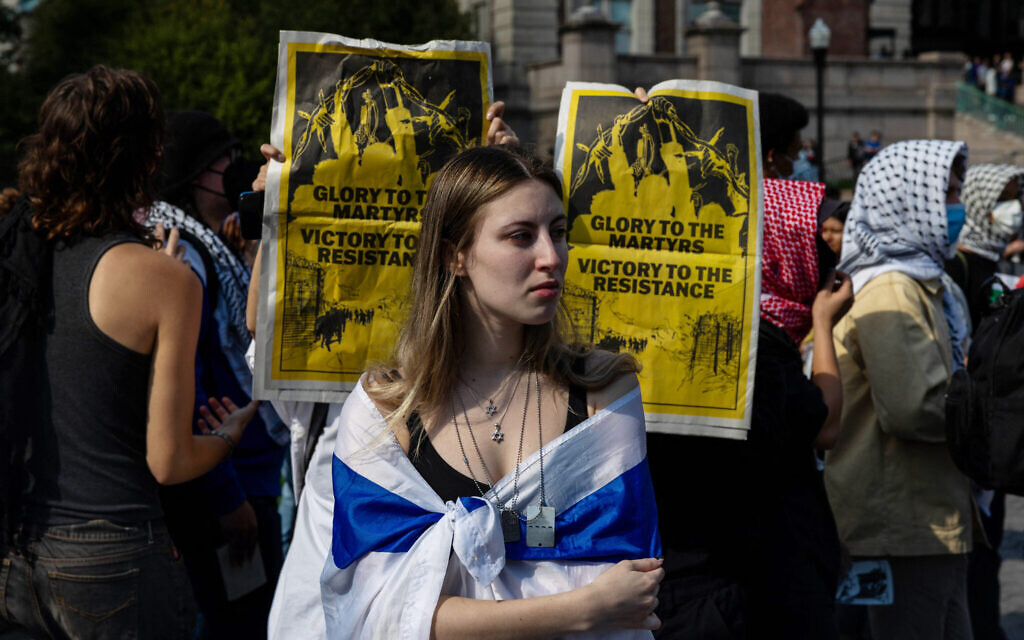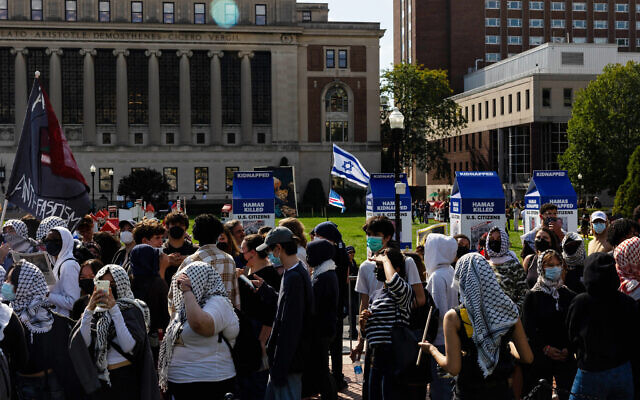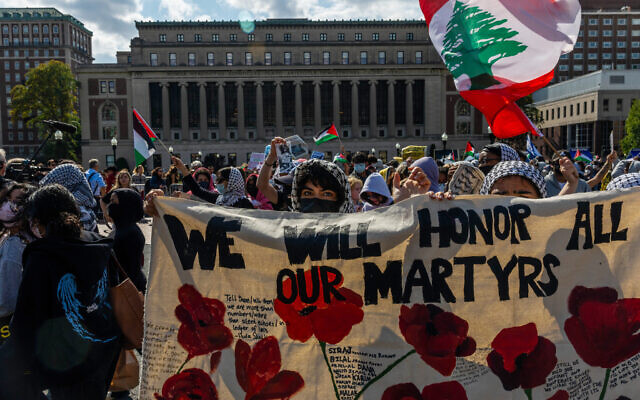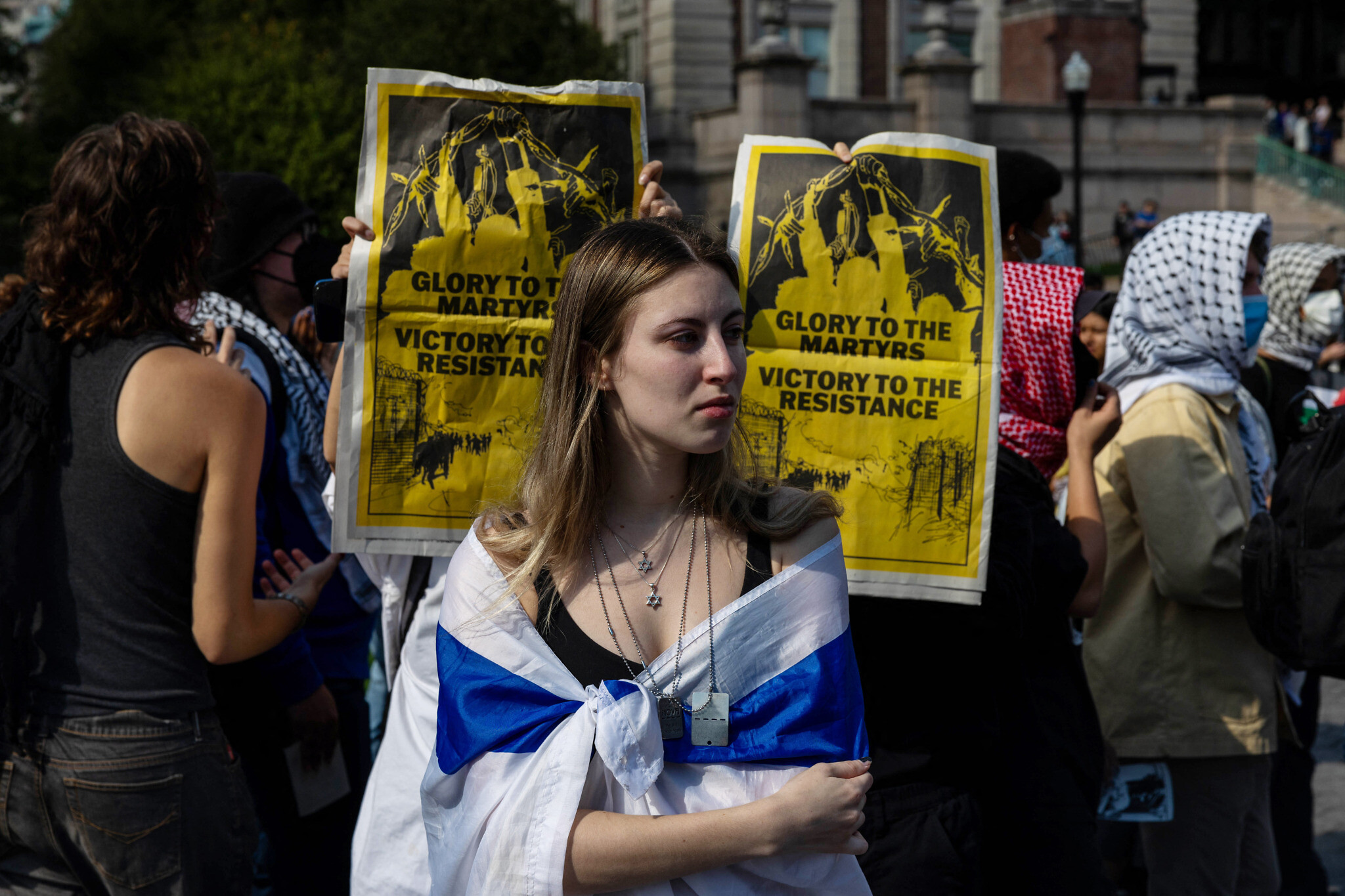Polds4OSU
Marshall
Yahya Sinwar, architect of Hamas massacre in Israel, is killed
Yahya Sinwar, the Hamas leader who stunned Israel and the world as an architect of the 2023 massacre and hostage-taking that set off the devastating Gaza war and made him a top target for Israel, was killed by Israel’s military on Oct. 16 in southern Gaza. He was 61.
A statement by Israeli’s miliary said Mr. Sinwar was killed in an operation launched after intelligence reports identified suspected locations of senior Hamas figures. The statement gave no further details. Hamas did not immediately confirm his death.
Mr. Sinwar was seen as the key planner of the brutal Oct. 7, 2023, attack when Hamas fighters burst through the security fence enclosing Gaza, killing about 1,200 people and taking about 250 captives.
Israel’s military described Mr. Sinwar as a “dead man walking” and scoured Gaza tunnels for signs of him amid a withering air and ground campaign, which killed tens of thousands of people and turned parts of Gaza into wastelands. The death tolls released by the Gaza Health Ministry did not distinguish between fighters and others, but many Western governments and humanitarian groups said the majority of the casualties have been civilians.
Israel offered a $400,000 reward for information on Mr. Sinwar’s whereabouts. But for more than a year, he managed to evade the manhunt even as Israel’s forces tightened its grip on Gaza and expanded attacks on another foe, Hezbollah in Lebanon, killing the group’s leader, Hasan Nasrallah.
It is unclear what impact Mr. Sinwar’s death will have on the war and the future of Hamas, but Israeli officials had said they could not wrap up their attacks until Mr. Sinwar was killed or captured.
Mr. Sinwar’s views were molded by a total of 22 years in Israeli jails beginning in the 1980s, and from his hardscrabble upbringing in Gaza’s Khan Younis refugee camp, said interrogators, former prison mates and experts on Hamas. Mr. Sinwar spent his time behind bars studying Hebrew, watching Israeli television and consuming books about the country’s leaders, learning all he could about his enemy.
He wielded significant power for decades, but only became the group’s top leader after its political chief Ismail Haniyeh — viewed by diplomats and analysts as part of the movement’s more pragmatic contingent — was killed in Tehran in July in a suspected Israeli operation. Mr. Sinwar’s appointment as head of the political wing in the midst of the war cemented the supremacy of the group’s military echelons over its leadership based outside Gaza.
The move also recognized how much Mr. Sinwar had been a growing force in Hamas for decades, building his influence from jail and shifting Hamas toward a more radical path.
“He was very clever, he was very tough, very serious all the time,” Michael Koubi, who spent more than 150 hours questioning Mr. Sinwar for Shin Bet, Israel’s domestic intelligence agency, recalled in an interview with The Washington Post. “And he had for Israel, a very deep hate.”
The Oct. 7 rampage shattered Israel’s sense that its enemies were no match for the country’s security forces and intelligence services. Thousands of Palestinian militants led by fighters from Hamas’s elite al-Qassam Brigades overran a string of border communities around the security fence that penned off Gaza. They carried documents that showed their preparations for close-quarters killing.
Ibrahim al-Madhoun, a columnist affiliated with Hamas, described Mr. Sinwar as “unwavering” in his belief that Palestinians could strike back using commando-style tactics. He said Mr. Sinwar “paid meticulous attention” to planning details of the Oct. 7 assault, including picking its name “Operation al-Aqsa Flood,” a reference to Jerusalem’s al-Aqsa Mosque, one of Islam’s holiest sites and a site subject to several Israeli raids before the attack.
His death will likely give Israelis some closure, Alon Pinkas, a veteran Israeli diplomat and former senior-level adviser, told The Post. “For Israelis he represents evil incarnate, but there should be no doubt: Getting him will not ‘eradicate,’ ‘annihilate’ or ‘topple’ Hamas. Nor would it represent a victory.”
Yahya Ibrahim Hassan Sinwar was born on Oct. 29, 1962, in Khan Younis in the southern Gaza Strip, then under Egyptian control. Mr. Sinwar’s family had been forced out of the Palestinian town of Majdal — now the Israeli city of Ashkelon — among hundreds of thousands of people displaced during battles between Arab forces and Israel after its 1948 announcement of statehood. The upheavals are known to Arabs as the Nakba, or “catastrophe.”
“He talked all the time about his childhood in the camp and the suffering there,” said Esmat Mansour, who was a fellow inmate of Mr. Sinwar in three Israeli jails, including in Ashkelon. When prisoners complained about harsh conditions, Mr. Sinwar recounted the struggle for food and the shortage of bathrooms in the camp packed with thousands of desperate families.
“He’d always go back to these stories when he’d tell us to struggle against the occupation,” Mansour said.
Mr. Sinwar was around 5 years old when Israel took control of Gaza from Egypt during the 1967 War. In a semi-autobiographical novel he wrote in prison, “The Thorn and the Carnation,” he described the fear of war, curfews and raids.
Mr. Sinwar was first arrested by Israel in 1982 while studying Arabic at the Islamic University of Gaza. He had been a founding member of Hamas’s student movement, according to Madhoun, the Hamas-affiliated columnist.
He was a founder of the Majd, a local network that sought out and killed collaborators with Israel, which later became Hamas’s internal security force. The extent of Mr. Sinwar’s influence only came apparent to Israeli authorities in 1988 when he was arrested after being injured by an explosive device he accidentally detonated, Koubi said.
While in jail, Mr. Sinwar was convicted in the killing of four Palestinians targeted by Hamas. According to a court transcript from his interrogation, Mr. Sinwar described strangling victims to death. Koubi recounted how in one case, Mr. Sinwar had ordered a man to bury his brother alive. “He was cruel,” Koubi said.
Hamas was still a relatively small group in the Palestinian milieu when Mr. Sinwar was first arrested, said Mansour. His clout grew alongside that of Hamas, as the group began bombing campaigns during the second Palestinian intifada, or uprising, that began in 2000.
Mr. Sinwar had been staunchly opposed to the 1993 Oslo accords, the U.S.-brokered agreement that outlined a two-state solution to the conflict, Mansour recalled. Even as Hamas’s official position softened, Mr. Sinwar remained resolute.
“Over is the time Hamas spent discussing recognizing Israel,” Mr. Sinwar said in 2017. “Now Hamas will discuss when we will wipe out Israel.”
Mr. Sinwar’s younger brother, Muhammad Sinwar, a commander in Hamas’s military wing, has been accused of helping him plot the Oct. 7 bloodshed along with other military leaders. In June 2006, the younger Sinwar was suspected of playing a key role in the 2006 capture of Israeli soldier Gilad Shalit while Mr. Sinwar was behind bars.
As negotiators tried to agree on an exchange to free Shalit, Mr. Sinwar was a major roadblock in holding out for a better deal for Hamas, despite being top of the swap list himself, according to Yuval Bitton, a prison dentist who treated Mr. Sinwar and used the trust that he built with patients to become an Israeli intelligence officer.
“Others were ready to compromise,” Bitton said. “But Sinwar, he could wait 10 years, 20 years or 30 years to achieve his goal.” Bitton said he saved Mr. Sinwar’s life when he referred him for treatment for brain surgery in 2004. (Bitton’s nephew was among those killed in Israel in the Oct. 7 attacks.)
Eventually, 1,027 prisoners were released in a 2011 exchange for Shalit, with Mr. Sinwar returning to Gaza amid a hero’s welcome. He vowed to release those who had been left behind.
That obsession with the liberation of his fellow inmates is key to understanding his motivations for Oct. 7, according to those who know him. “He looked to the prisoners as a family,” Mansour said.
Mr. Sinwar’s 2017 election as leader of Hamas in Gaza in a secretive ballot was taken as a win for more extreme elements in Hamas. “He transformed Hamas,” said Ghaith al-Omari, a senior fellow at the Washington Institute for Near East Policy who held various positions in the Palestinian Authority, adding that he brought the group’s “center of gravity firmly into Gaza.”
While other leaders such as Haniyeh had tried to balance the interests of Hamas with Sunni powers in the region, Mr. Sinwar shifted Hamas “firmly into the Iranian orbit,” Omari said. Other proxies in the region for Shiite Muslim-led Iran include Lebanon’s Hezbollah and Houthis in Yemen.
Complete information on survivors was not immediately available.
Publicly at times, Mr. Sinwar asserted that he was not seeking confrontation. “I don’t want any more wars,” he told Yedioth Ahronoth, an Israeli newspaper, in 2018.
But speaking to Palestinian audiences at home, his message was different in reference to Israel. “We will come to you, God willing, in a roaring flood. We will come to you with endless rockets, we will come to you in a limitless flood of soldiers, we will come to you with millions of our people, like the repeating tide,” he said in a speech less than a year before the attack.








